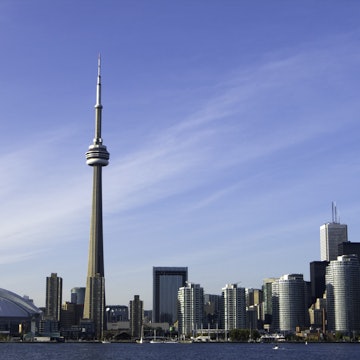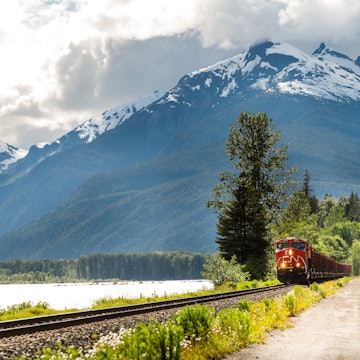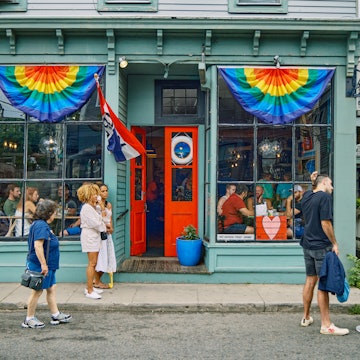

Explore Toronto's neighborhoods one district at a time with this guide. Marius Gomes/Getty Images
Canada’s largest city is defined, in large part, by its many vibrant, distinct neighborhoods, as well as by its waterfront location on the northern shores of Lake Ontario. As the famously multicultural local food scene shows, many of Toronto’s best-known areas emerged alongside various waves of migration, and, for visitors, discovering these diverse districts through their cuisines is an especially delectable highlight.
Downtown Toronto’s major sights and neighborhoods are easily explored on foot and by using the efficient public transit system (the TTC, short for Toronto Transit Commission), but with a little extra time you can dig deeper into Toronto life on a visit to a few more offbeat districts. Accommodation options congregate downtown, though you’ll still find plenty of tempting places to stay dotted across other areas.
Here’s our guide to the most exciting neighborhoods to explore in Toronto.

1. Entertainment and Financial Districts
Best for landmark sights and performing arts
Welcome to Toronto’s epicenter of tourism, commerce and theater. Skyscrapers sparkle in the sun, rising above business-driven streets, while the much-talked-about PATH (Toronto’s winter-proof network of underground tunnels) weaves below. Smart hotels and restaurants abound too, making these two side-by-side neighborhoods – centered on King, Adelaide and Richmond Sts, west of Yonge St – a convenient base.
Key attractions are dotted around the area, near Union Station, a beaux arts beauty that’s also Canada’s busiest transportation hub. First up for most visitors is the 553m-tall (1814ft) CN Tower, a 1970s skyline icon with entrancing 360-degree urban views. Other highlights include the Rogers Centre (home of the beloved Toronto Blue Jays baseball team), the family-friendly Ripley’s Aquarium (Canada’s largest aquarium) and the Hockey Hall of Fame (housed in the rococo-style Bank of Montreal building). The Entertainment District also has the TIFF Lightbox, the HQ of the celebrated Toronto International Film Festival, where you can catch independent films and other events year-round.
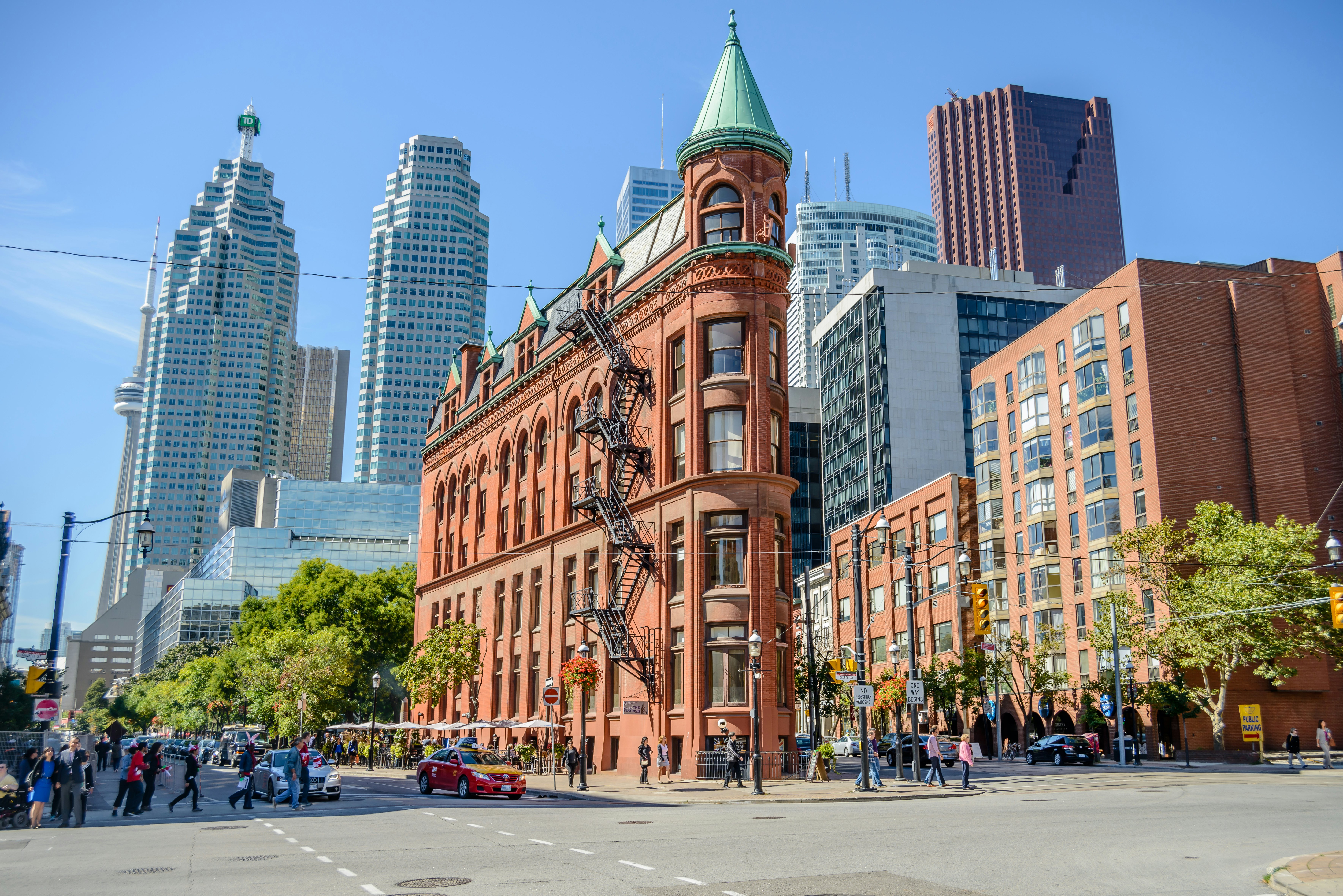
2. Old Town and Distillery District
Best for historical architecture and market shopping
Among the most evocative corners of Toronto is the architecture-rich area just east of Union Station, where some of the city’s oldest buildings lure both curious visitors and a local crowd. All roads lead to the grand St Lawrence Market, built in the mid-19th century and still very much thriving with over 100 buzzing food stalls. Schedule permitting, catch the famous Saturday farmers market or the vintage-focused . Other nearby landmarks include the triangular, turreted Flatiron Building, dating from the 1890s.
A few blocks further east, the former Gooderham and Worts whisky distillery is now the heart of the spirited Distillery District. The Victorian-era warehouses and heritage buildings here have been reborn as craft shops, breweries, art galleries and original boutiques, and in winter the whole place transforms into an incredibly popular Christmas market.
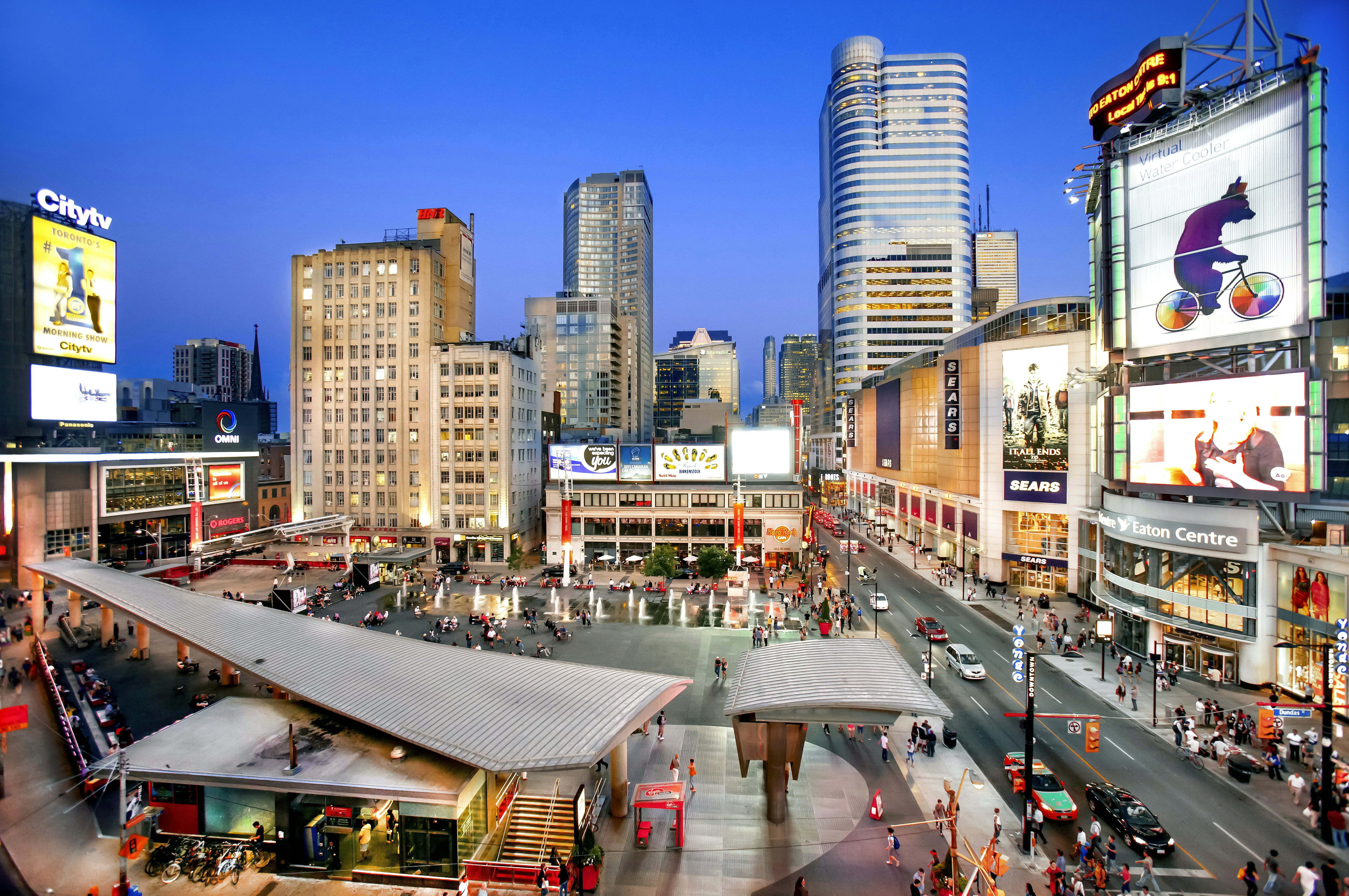
3. Downtown Core, Yorkville and the Village
Best for hotels, upscale dining and Toronto’s LGBTIQ+ scene
Stretching between Queen and Bloor Sts, the heart of downtown Toronto is filled with bright lights, urban buzz and large-scale hotels. It's framed roughly on either side by University Ave (west) and Jarvis St (east). In the thick of all this, the landmark Yonge-Dundas Sq (at the intersection of Yonge and Dundas Sts) is often likened to New York’s Times Sq. While overall this isn’t the most scenic part of the city, it’s convenient and well-connected, with plenty to do on the doorstep. Towards the southern end of the downtown core, you’ll find the busy Eaton Centre mall and the 1960s City Hall, boldly designed with two curving concrete towers by Finnish architect Viljo Revell.
Just north of the downtown core, around Bloor St, Yorkville is one of Toronto’s chicest neighborhoods, with a raft of upmarket boutiques, restaurants and hotels. The wonderful Royal Ontario Museum, whose collection of dinosaur skeletons is just one of many curious highlights, is nearby.
Toronto famously has one of North America’s liveliest LGBTIQ+ scenes, with most of the fun centered on the Church and Wellesley area, east of Yonge St between Gerrard and Charles Sts. Also called the Village, the rainbow-clad district hosts one of the world’s largest Pride celebrations each June and is a fun spot at any time for hopping between bars, terraces, clubs and other queer-community hubs.
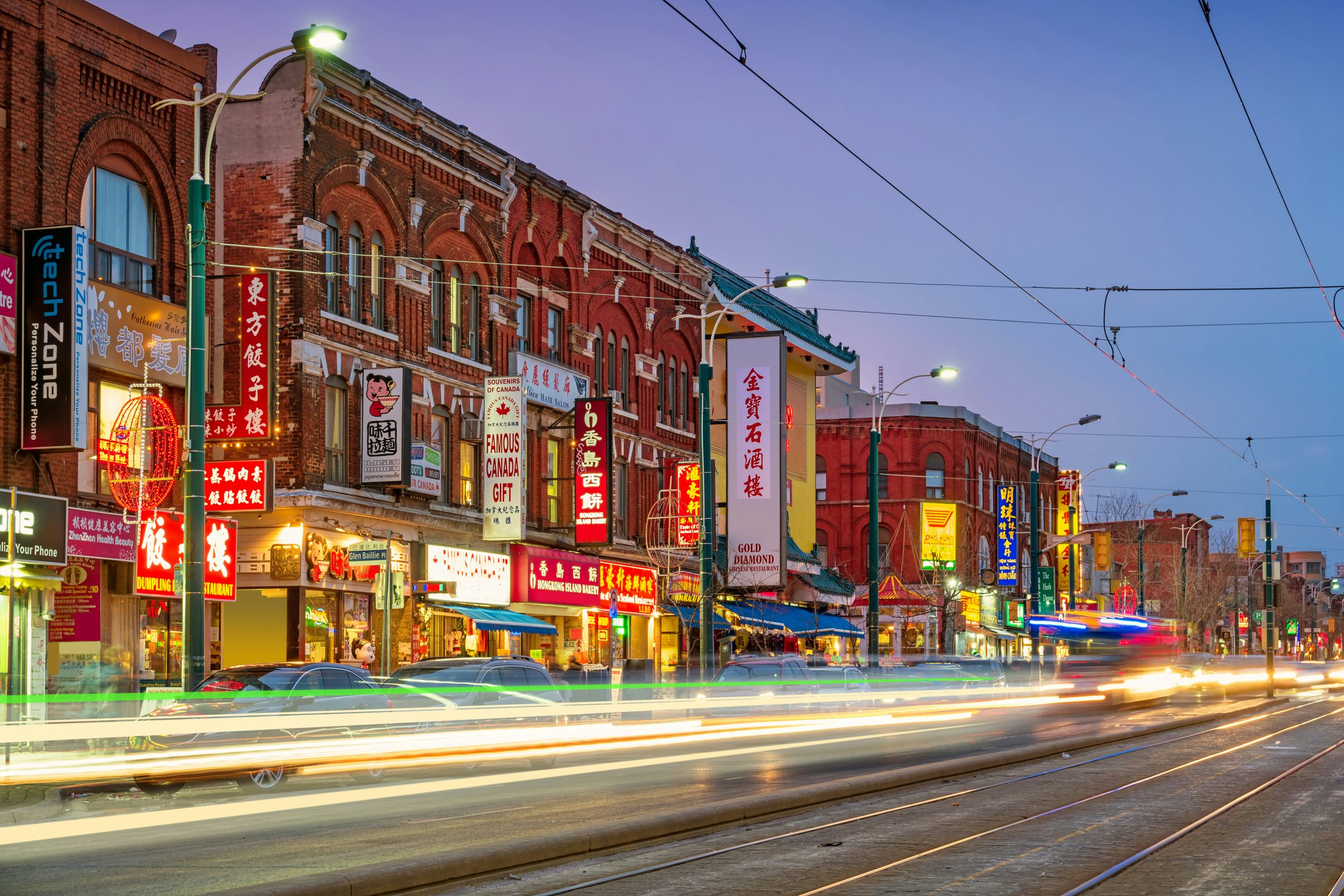
4. Chinatown and Kensington Market
Best for a multicultural food scene
Heading north from Queen St, Spadina Ave sweeps through Chinatown, a fluorescent-lit district with roots dating back to the 1870s. Torontonians come here to dine on fiery noodles and savory dumplings, to pick up products at specialized stores and to enjoy the neighborhood festivals. A short stroll east from Spadina along Dundas St West leads to the Art Gallery of Ontario, a powerhouse of the city’s creative world that includes a ship-like 21st-century extension designed by Toronto-born architect Frank Gehry.
More culinary deliciousness awaits in bohemian Kensington Market, which borders Chinatown on the west side and (despite the name) is actually more of a neighborhood than a market. Lined with colorfully painted Victorian houses, it’s best known for its world-wandering cuisine, from tacos to Caribbean-style patties. It’s also a place to go for vintage shopping, with preloved boutiques strung along Kensington Ave.

5. The Annex, Little Italy and Koreatown
Best for independent restaurants – and a castle
Jostling up against Yorkville on the west side, the Annex is a largely residential area popular with students and academics from the respected nearby University of Toronto. For visitors, the area’s big attraction is the chance to wander around Casa Loma, Toronto’s sole castle, built between 1910 and 1914 by the wealthy financier Sir Henry Pellatt.
Just west of the Annex along Bloor, between Bathurst and Christie Sts, Koreatown emerged in the 1970s and has a stash of kimchi-fired restaurants and karaoke bars. You’ll find some of Toronto’s hottest dining spots not far away in Little Italy, centered on College St and Dundas St West, which pulls in a lively crowd with its wave of trendy restaurants and more classic Italian kitchens. Many of the pretty boulevards here are lined with Edwardian-era homes.
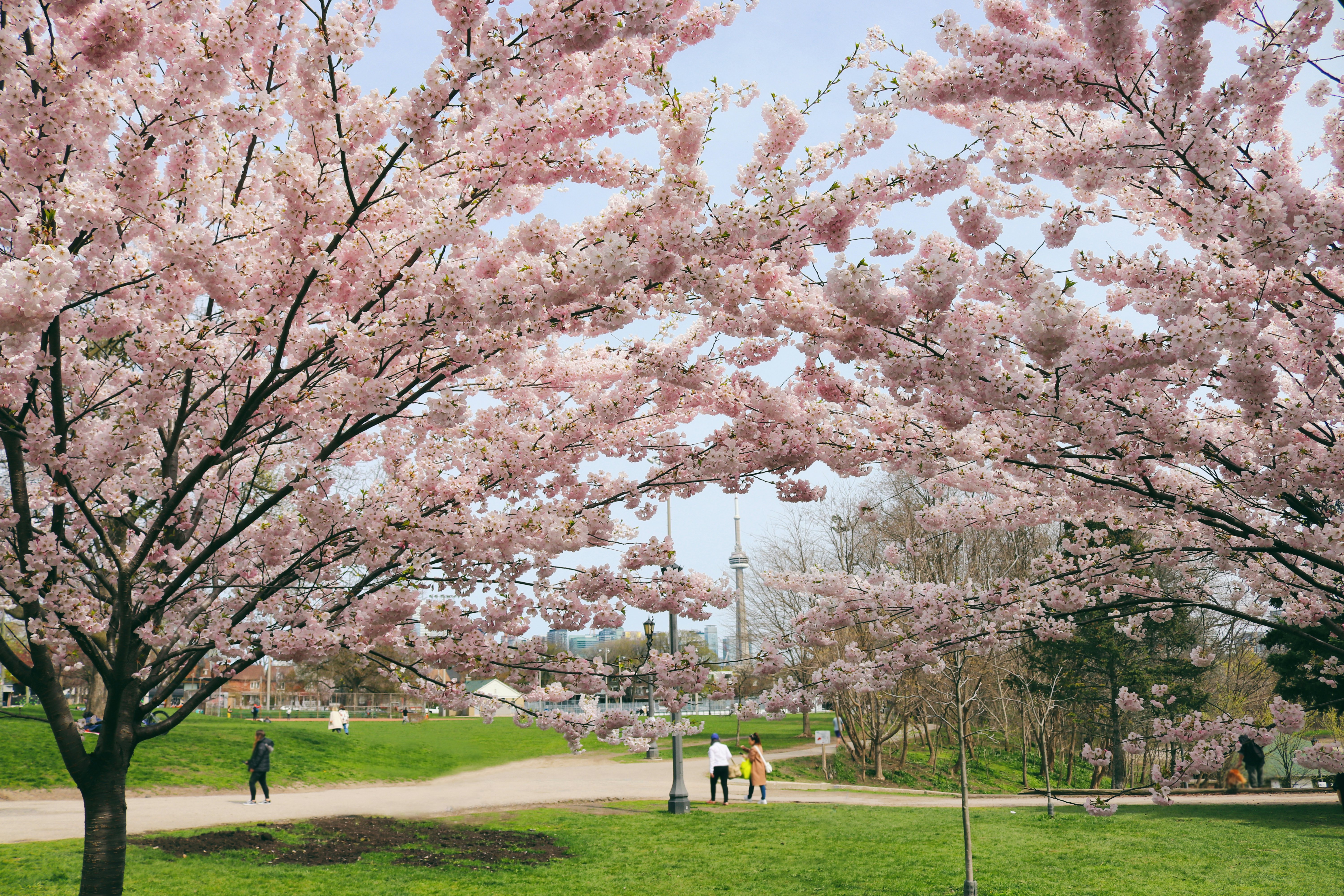
6. Trinity Bellwoods and the West End
Best for green spaces and fun dining
The leafy green haven of Trinity Bellwoods Park anchors the small, lively Trinity Bellwoods neighborhood, just west of downtown. This stylish pocket of the city is popular for its buzzy restaurants and bars, creative pop-up markets and independent boutiques, especially along Ossington Ave and Queen St West. There are a couple of cool boutique-style hotels, but even if you aren’t staying here it’s an exciting neighborhood to stroll through, particularly on weekends when the food-and-drink scene draws people from all over the city.
West of Trinity Bellwoods is the West End’s biggest draw, beautiful High Park. Toronto’s beloved green space is an undulating, forested expanse sprinkled with walking trails, tennis courts, bird-rich ponds, picnic spaces and, in spring, marshmallow-pink cherry blossoms. During summer months, don’t miss a Shakespeare performance at High Park’s outdoor amphitheater.

7. East Toronto
Best for neighborhood wandering
Hop across the Don River to discover a crop of untouristy neighborhoods within easy reach of downtown. In East Toronto, the city’s industrial heritage meets low-key parks, varied international cuisine and walkable residential areas with a laid-back energy. There aren’t many headline sights, but Evergreen Brick Works – a revived 1880s factory turned community hub – provides a taste of the East End lifestyle with markets, music, art and more. There’s a trendy edge around Queen St East too, which has vintage boutiques, cool coffee spots, art shops and lively bars. Sloping , meanwhile, has some of Toronto’s most magical skyline views.
Along Danforth Ave is a stretch known as Greektown, where you’ll find one of North America’s largest Greek communities, with a major summer food festival and plenty of taverna-style restaurants. Further east you can devour dosas (savory crepes) in Little India, or join a local crowd for walking, cycling and swimming on the lakefront in the Beaches.

8. Waterfront
Best for urban views and active fun
Toronto’s lakeside location dazzles across the sprawling Waterfront area, where flower-filled parks, public-use Muskoka chairs and repurposed industrial-era buildings are dotted along a view-drenched, pedestrianized boulevard hugging Queens Quay (pronounced "key"), the main thoroughfare along the water. Torontonians head here to go running, walking and cycling along the Martin Goodman Trail, a beloved multiuse path tracking across the city’s shoreline. Hiring a bike is a great way to explore, perhaps all the way along to the Humber Bay Arch Bridge in the west. In summer you can go paddle boarding, kayaking and swimming in Lake Ontario.
Just offshore from downtown are the Toronto Islands, which morph into the city’s favorite outdoor playground during warmer months and have spectacular skyline views, all easily accessible by ferry.
Plan with a local





